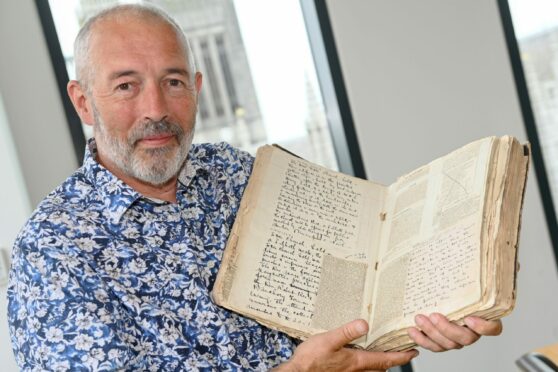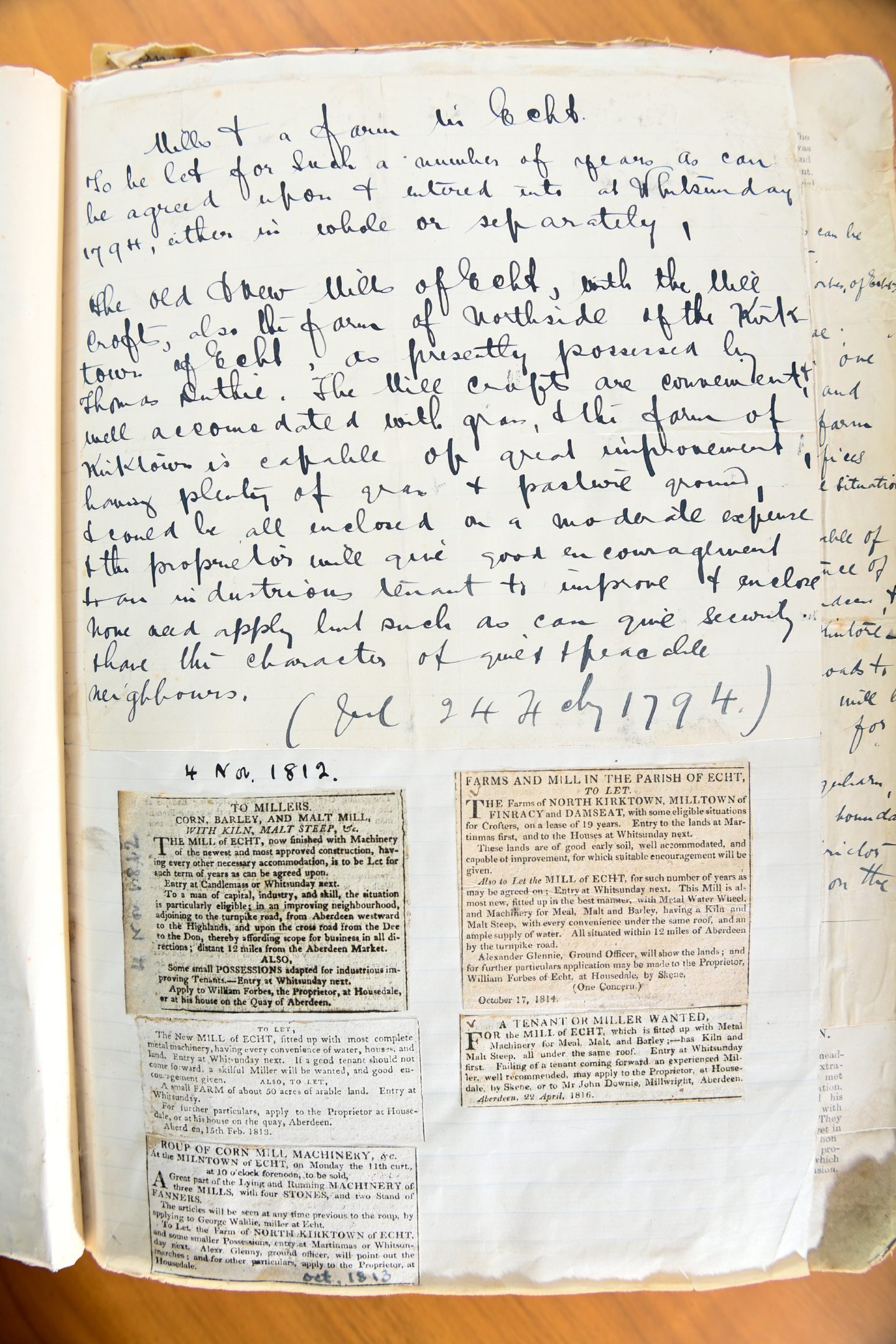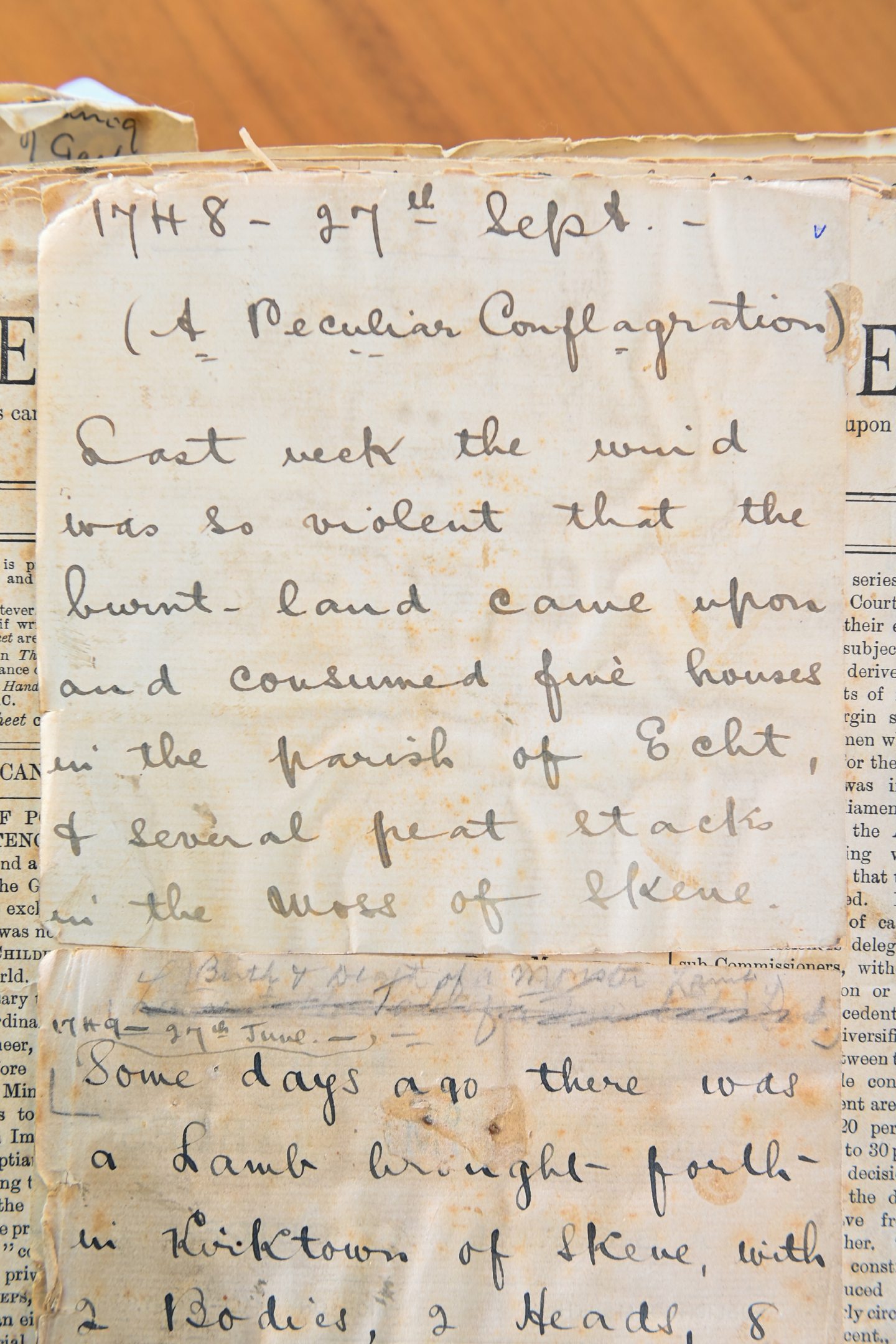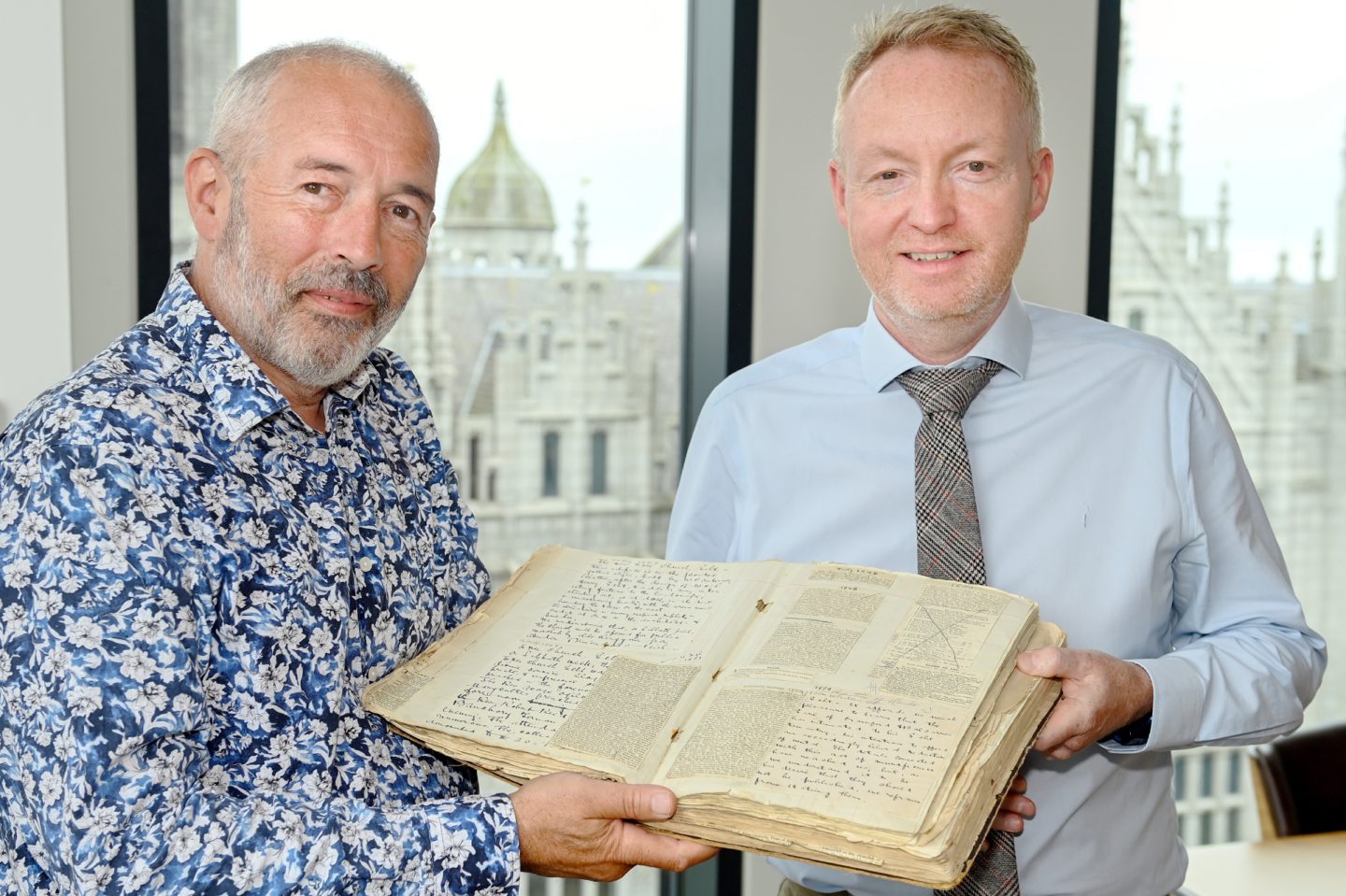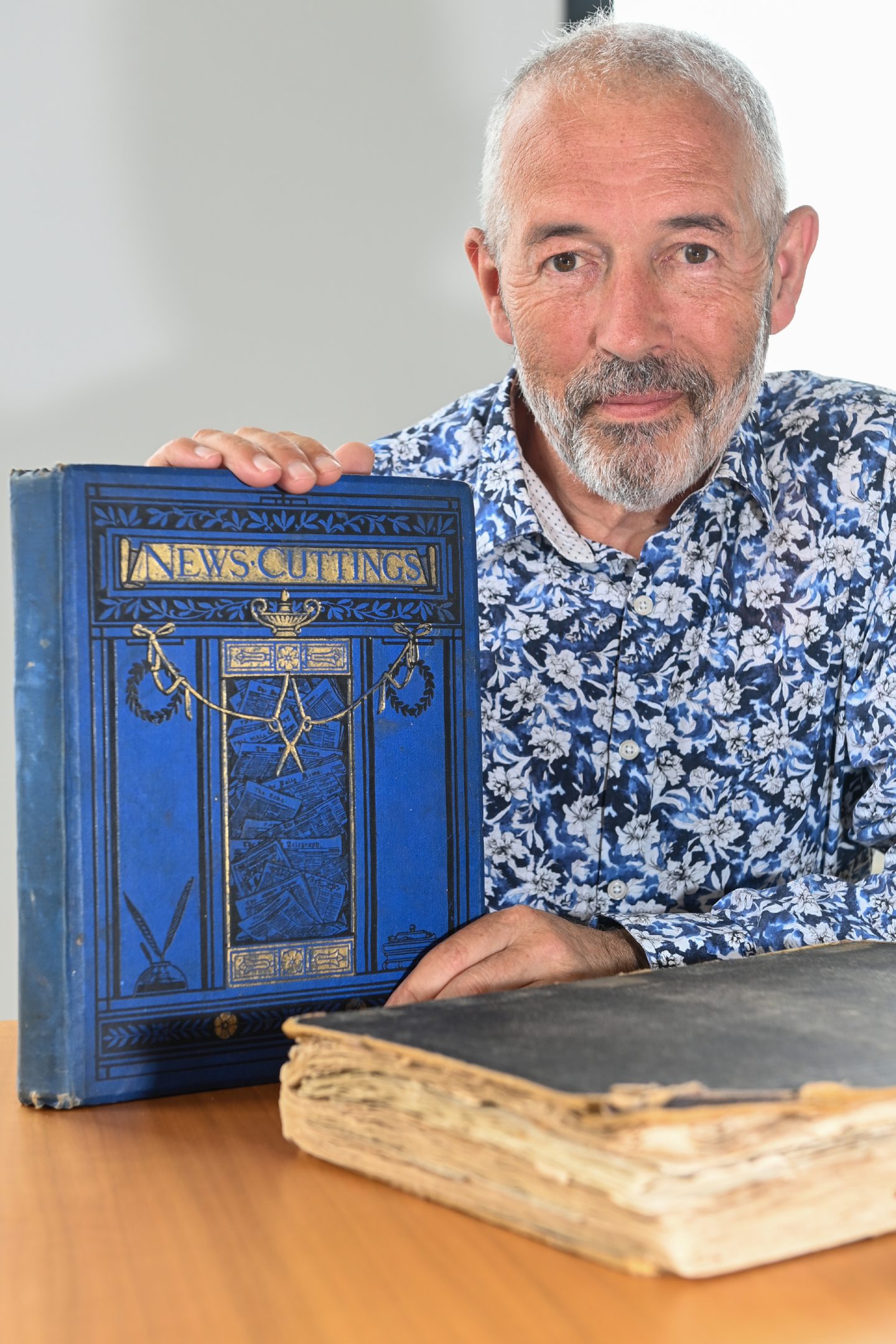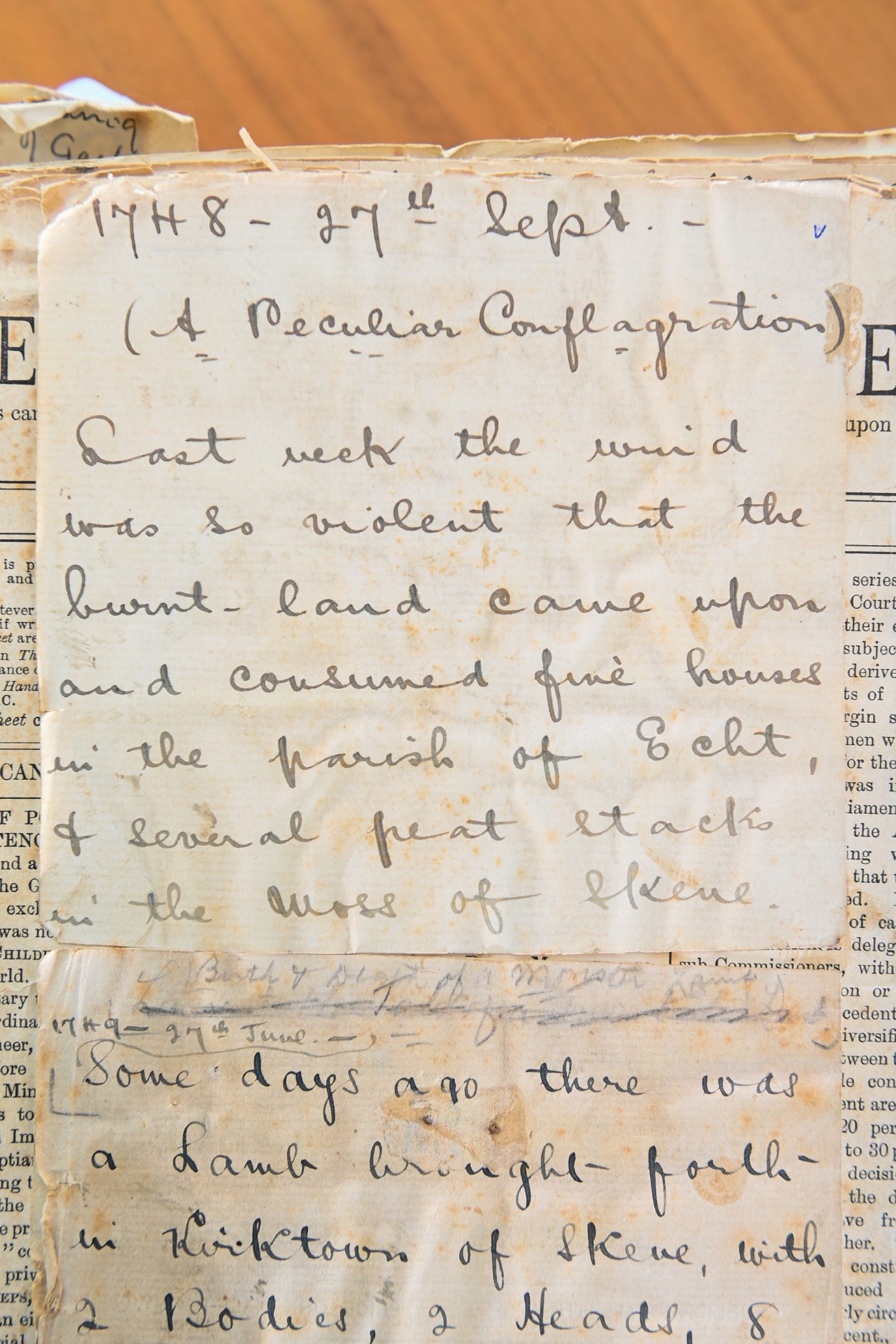They are books which feature a collection of fantastic beasts, terrible storms, grotesque crimes and countless tales of life in Aberdeenshire during the last 275 years.
And now, north-east businessman Neil Haston has gifted the brace of Victorian volumes, which include a wealth of stories dating all the way back to 1748 – the year when Aberdeen Journals was first published – to the P&J archives for future generations to enjoy.
The precious scrapbooks, which were originally collated by James Coutts, the commercial manager of Aberdeen Journals in 1899, include hundreds of newspaper cuttings, handwritten transcripts, finely-drawn maps, diagrams and other items, many relating to the communities of Echt and Skene.
One of the first pieces, dating from June 1748, relates how villagers in the latter place were terrified by the arrival of a strange creature in their midst.
Tales of punishment, storms and war
It reads: “Some days ago, there was a lamb brought forth in Kirktown of Skene with two bodies and two heads, eight feet, two tails, but one neck.
“One of the kids had only one eye [which was] placed in the crown of its head. The people were so frighted [sic] at this unusual production that it was left in the fields and devoured by the beasts of prey.”
In the same year, under the headline “A Peculiar Conflagration”, there is a report of how a severe wind “was so violent” that it sparked a massive fire which “consumed five houses in Echt” and destroyed peat stacks in Skene.
Elsewhere, myriad court reports tell of serious punishment being meted out to people caught stealing turnips and local dwellers being transported to Australia for thieving from the premises of local merchants.
The entries also include job advertisements and farm sales, with one from November 1812 looking for: “A man of capital, industry and skill” to run the Mill of Echt in what is described as “an improving neighbourhood, adjoining to the turnpike road from Aberdeen, west to the Highlands, and upon the cross road from the Dee to the Don”.
And there are several accounts of young men going off to fight in various wars, including at Trafalgar and in the Crimea during the 19th Century.
Mr Haston, 63, explained that the books, which are in a fragile condition, had been in the ownership of Hamish Cruickshank, head of art at Aberdeen Grammar School, before they were passed on to his mother Elspeth.
Books’ links to Aberdeen Journals
They have now been handed on to him, but although he said he was fascinated by the volumes and their contents, he was worried they might be lost forever if they were not properly archived and digitised.
He said: “I’ve had a look through some of the reports and they offer so many interesting glimpses of everyday life as it was going all the way back to 1748.
“James Coutts clearly put a lot of work into bringing all the material together and, given that he worked for Aberdeen Journals 120 years ago, it seems only right that these books should be handed back to the company.”
The artefacts may have seen better days, but considering that many of the accounts pre-date the birth of Robert Burns and Wolfgang Amadeus Mozart and highlight the full gamut of life and death from just a few years after the Battle of Culloden, these tomes can properly be regarded as antiques.
However, Mr Haston said he was only interested in making them accessible for those who want to learn about the past in Aberdeenshire.
He added: “This is not about their monetary value. This is about ensuring that these compelling pieces of history are not lost and are accessible to anybody who might wish to explore their contents in the future.
“It is difficult to imagine the sheer amount of hard work which went into creating these books. I have barely scratched the surface of them, but I would love to know more about what is in these pages at some stage.”
James Coutts was associated with Aberdeen Journals for more than 40 years and became one of the most well-known figures in the industry.
Following his death in April 1941, his obituary testified to the success he had made of his ambition to put “them [the titles] in the forefront of Scottish journalism and in this he was eminently successful”.
It continued: “His keen business sense was revealed in bold moves that further extended the newspapers’ circulation. Notable were special measures taken early this century to cater for the whole of the north-east from Forfar to Inverness and he took pride in the development.”
He never forgot his roots in Echt
Mr Coutts, whose father had been a bank agent in Echt, never forgot his roots and served as a JP, was a long-term member of Mannofield Church in Aberdeen, and a “modern bard of Bon Accord” with a passionate enthusiasm for history and the stories of those in the villages around him.
He was 81 when he died at home in the city’s Great Western Road.
